
Deutsch-Chinesische Enzyklopädie, 德汉百科
 FIFA Fussball-Weltmeisterschaft 2018
FIFA Fussball-Weltmeisterschaft 2018
 FIFA Fussball-Weltmeisterschaft 2018
FIFA Fussball-Weltmeisterschaft 2018
 FIFA Fussball-Weltmeisterschaft 2018
FIFA Fussball-Weltmeisterschaft 2018
 Group B
Group B
 FIFA Fussball-Weltmeisterschaft 2018
FIFA Fussball-Weltmeisterschaft 2018
 Group D
Group D
 FIFA Fussball-Weltmeisterschaft 2018
FIFA Fussball-Weltmeisterschaft 2018
 Group E
Group E
 FIFA Fussball-Weltmeisterschaft 2018
FIFA Fussball-Weltmeisterschaft 2018
 Group G
Group G
 Hansestadt
Hansestadt

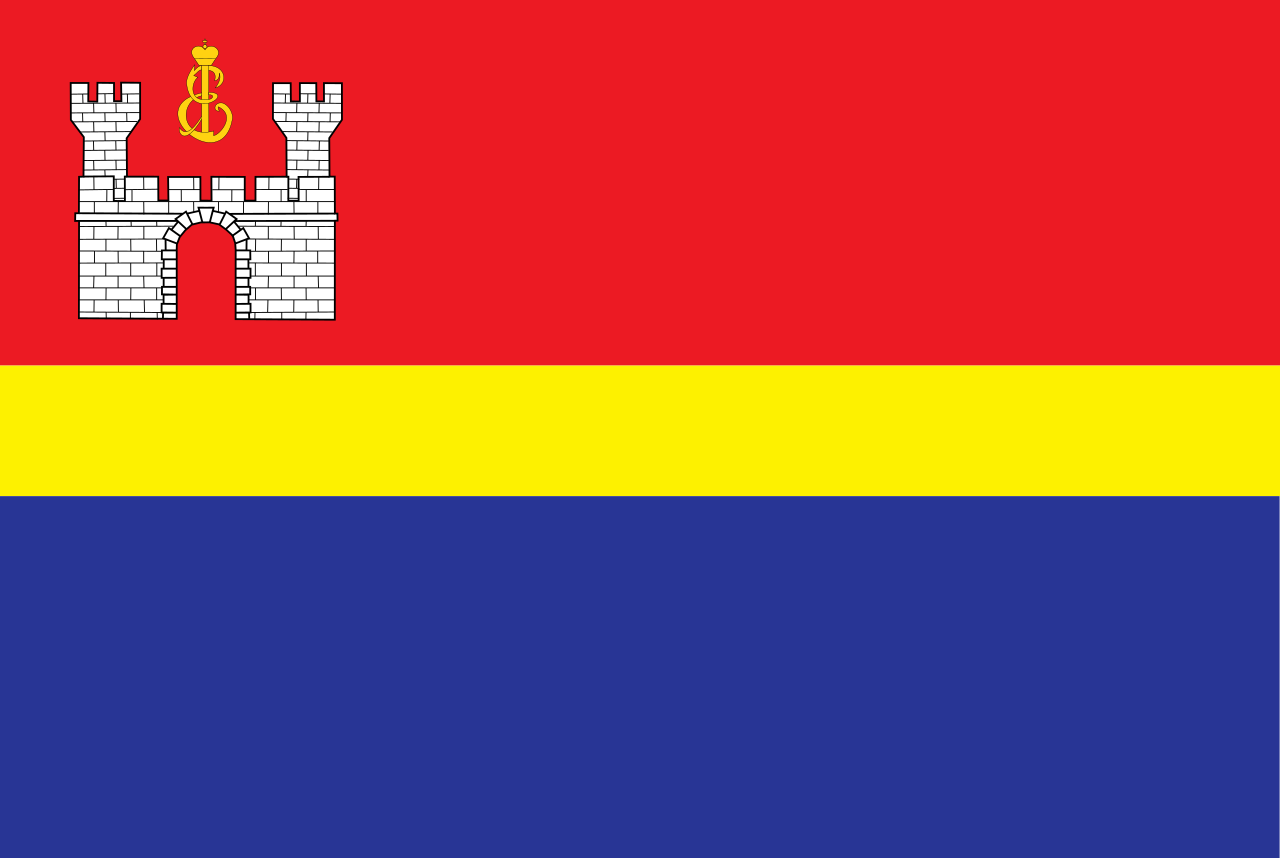 Kaliningrad Oblast
Kaliningrad Oblast
 Russia
Russia

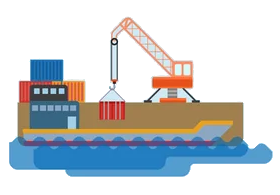 Important port
Important port

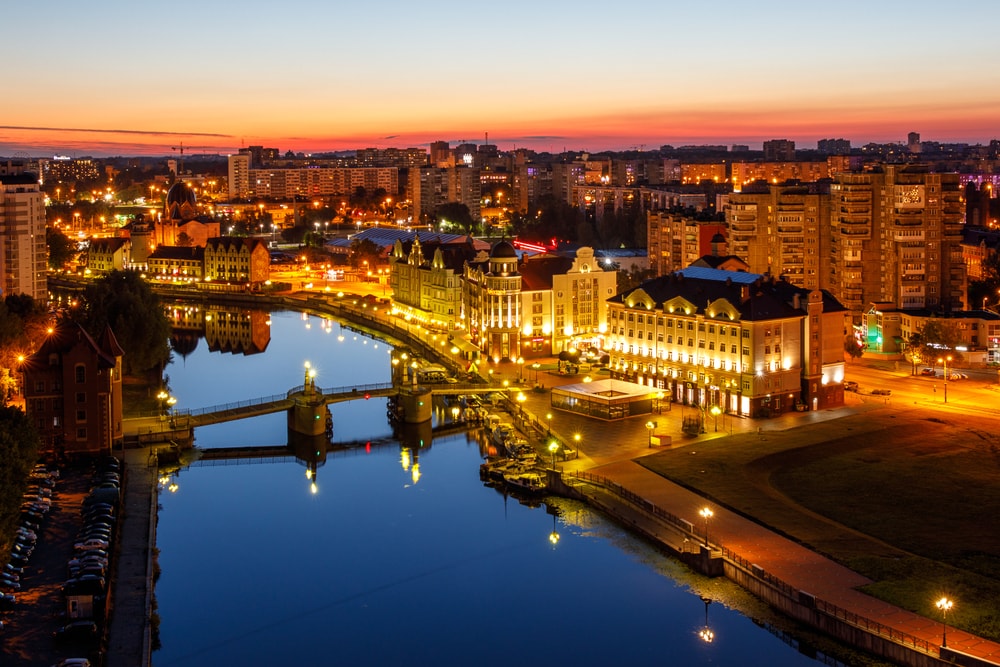
加里宁格勒(俄语:Калининград,拉丁字母转写:Kaliningrad),旧名哥尼斯堡(德语:Königsberg,在德文中意指“国王之山”;俄语:Кёнигсберг;古普鲁士语:Twangste, Kunnegsgarbs, Knigsberg;波兰语:Królewiec;立陶宛语:Karaliaučius),是俄罗斯加里宁格勒州的首府,为濒临波罗的海的海港城市,市区面积215.7平方千米,2010年人口为431,402人。
此地最早是古普鲁士人的定居点,1255年条顿骑士团于北方十字军入侵期间在此建立据点,并出于对普热米斯尔·奥托卡二世国王的敬意取名“哥尼斯堡”。之后,该城一直是条顿骑士团国、普鲁士和德国东普鲁士的一部分,直到二战末期的1945年,苏联红军占领整个东普鲁士为止。二战结束后,根据《波茨坦协定》,东普鲁士约三分之一的面积划归给苏联,其余部分划归给波兰。1946年7月4日,苏联把划归给其的东普鲁士部分领土,取名为加里宁格勒州,以纪念当时刚逝世的最高苏维埃主席团主席米哈伊·加里宁,哥尼斯堡也同步更改为现名,并成为该州之首府至今。
Kaliningrad [kaˈliːniːnɡʀaːt] (seit 1946 russisch Калинингра́д [kəlʲɪnʲɪnˈɡrat], bis 1946 Königsberg) ist die Hauptstadt der Oblast Kaliningrad. Die vormals deutsche Stadt Königsberg wurde als Ergebnis des Zweiten Weltkrieges unter dem Namen Kaliningrad, wie der gesamte Nordteil Ostpreußens (außer dem Memelland), Teil der Russischen Sowjetrepublik, der größten Unionsrepublik der Sowjetunion. Benannt wurde die Stadt nach dem ehemaligen sowjetischen Staatsoberhaupt Kalinin. Seit der Unabhängigkeit der baltischen Staaten 1991 ist die Oblast Kaliningrad – von der Erreichbarkeit über die internationalen Gewässer der Ostsee abgesehen – eine Exklave Russlands zwischen Polen und Litauen.
カリーニングラード(ロシア語:Калининград〔カリニングラート〕、ラテン文字転写の例:Kaliningrad )は、ロシア連邦西部にあるカリーニングラード州の州都である。バルト海に接する港湾都市で、人口は約42万人。カリーニングラード州はポーランドとリトアニアに挟まれたロシアの飛地領で人口はおよそ95万人、世界有数の琥珀の産地である。
カリーニングラードはもともと1255年にドイツ人の東方植民によって建設された都市で、1946年まで使われていた旧名はケーニヒスベルク(Königsberg;ドイツ語で「王の山」の意)。20世紀前半まではドイツの東北辺境の重要都市であった。
Kaliningrad (Russian: Калининград, IPA: [kəlʲɪnʲɪnˈɡrat]) is a city in the administrative centre of Kaliningrad Oblast, a Russian exclave between Poland and Lithuania on the Baltic Sea.
In the Middle Ages it was the site of the Old Prussian settlement Twangste. In 1255, during the Northern Crusades, a new fortress named Königsberg was built by the Teutonic Knights. Königsberg became the capital of the Duchy of Prussia, a fiefdom of Poland from 1525 to 1657, and later East Prussia, Germany. It was heavily damaged during World War II, and its population fled or were removed by force. Königsberg became a Russian city, renamed Kaliningrad in 1946.
Kaliningrad (en russe : Калининград, en polonais : Królewiec, en lituanien : Karaliaučius), anciennement Königsberg en Prusse-Orientale, est une ville de Russie située dans une enclave territoriale, l'oblast de Kaliningrad, totalement isolée du reste du territoire russe, entre la Pologne et la Lituanie. Sa population s'élève à 441 376 habitants en 2013.
En 2018, la ville accueille quelques matchs de la Coupe du monde de football.
Kaliningrad (in russo Калининград; AFI: [kəlʲɪnʲɪnˈgrat]; ex denominazione in tedesco: Königsberg; in Yiddish: קעניגסבערג, Kenigsberg; tr. russa: Кёнигсберг, Kjonigsberg; in antico prussiano: Twangste, Kunnegsgarbs, Knigsberg; in latino: Regiomontum) è una città della Russia di 475 056 abitanti.
Essa è il capoluogo e centro principale dell'oblast’ omonima, exclave russa tra Polonia e Lituania con accesso al mar Baltico, di cui è uno dei maggiori porti. Il nome è un omaggio a Michail Ivanovič Kalinin, primo capo di Stato dell'URSS.
La città, che si trova in Prussia Orientale, un tempo territorio sotto sovranità tedesca, ha tale nome dal 4 giugno 1946; originariamente si chiamava Königsberg, letteralmente Monte del Re o Regiomonte, ed era stata la patria del filosofo Immanuel Kant. Nel 1992 passò alla Russia dall'Unione Sovietica, che l'aveva annessa nel maggio 1945. Essa è nota anche con gli esonimi Królewiec (in polacco), Kenigsberg (in lingua yiddish) e Karaliaučius (in lituano); prima di ricevere il nome attuale, in russo era nota come Kënigsberg.
Kaliningrado (en ruso: Калининград, transliterado: Kaliningrad, en alemán: Königsberg, en prusiano antiguo: Twangste, Kunnegsgarbs, Knigsberg, en lituano: Karaliaučius, en polaco: Królewiec y en bielorruso: Каралявец) la antigua Königsberg prusiana, es una ciudad portuaria de Europa Oriental perteneciente a Rusia tras su anexión en 1945 y situada en un enclave en la desembocadura del río Pregel, que desagua en el lago del Vístula, comunicado a su vez con el mar Báltico por el estrecho de Baltiysk.
Es capital del óblast de Kaliningrado, que ocupa 15 100 km² y tiene una población de 968 200 habitantes (2004).[cita requerida] Dicho óblast (región o provincia) se encuentra aislado del resto del territorio ruso, con fronteras al norte y al este con Lituania y al sur con Polonia, ambas miembros de la Unión Europea (UE).
Калинингра́д — российский город, который по решению Потсдамской конференции 1945 года вместе с северной частью немецкой провинции Восточная Пруссия был передан СССР[7]. До 4 июля 1946 года город имел название Кёнигсбе́рг (нем. Königsberg), ранее фигурировало название Короле́вец; в Польше его называли Круле́вец (польск. Królewiec), в Чехии — Кра́ловец (чеш. Královec), в Литве используется Караля́учюс (лит. Karaliaučius); до 1255 года — Твангсте́ (прусск. Twangste, Tuwangste, Twānksta).
Сегодня город Калининград — центр Калининградской области, являющийся самым западным областным центром Российской Федерации. Расположен при впадении реки Преголи в Калининградский залив. Население — 475 056[2] чел. (2018). По утверждениям городских властей, к ним добавляется ещё от 120 до 180 тыс. жителей области и приезжих из других регионов страны, живущих и работающих в Калининграде относительно легальным образом[8]. Калининград — второй по численности населения (первый — Санкт-Петербург) город Северо-Западного федерального округа, третий (после Риги и Вильнюса) — Прибалтики и седьмой среди городов побережья Балтийского моря. Калининград входит в шестёрку основных центров внутреннего миграционного притяжения в России за последние два десятилетия[9]. Город является ядром быстрорастущей Калининградской агломерации с населением свыше 715 тыс. человек[10][11].
Крупный транспортный узел: железные и шоссейные дороги; морской и речной порты; международный аэропорт Храброво. В Калининграде расположен штаб Балтийского флота ВМФ России. Калининград входит в число 25 крупнейших промышленных центров России[12].
В Калининграде расположены музеи (музей янтаря, историко-художественный, Мирового океана, Художественная галерея, музей фортификации и т. д.), театры, крупные библиотеки (в частности, фрагменты средневекового книжного собрания — библиотеки Валленродта), зоопарк, ботанический сад. В центре города расположен кафедральный собор в стиле кирпичной готики. До 2010 года Калининград имел статус «исторического города»[13]. В 2018 году в городе проведены матчи Чемпионата мира по футболу.
 FIFA Fussball-Weltmeisterschaft 2018
FIFA Fussball-Weltmeisterschaft 2018
 FIFA Fussball-Weltmeisterschaft 2018
FIFA Fussball-Weltmeisterschaft 2018
 Group B
Group B
 FIFA Fussball-Weltmeisterschaft 2018
FIFA Fussball-Weltmeisterschaft 2018
 Group D
Group D
 FIFA Fussball-Weltmeisterschaft 2018
FIFA Fussball-Weltmeisterschaft 2018
 Group E
Group E
 FIFA Fussball-Weltmeisterschaft 2018
FIFA Fussball-Weltmeisterschaft 2018
 Group G
Group G
 Russia
Russia

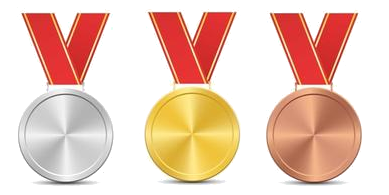 Sport
Sport



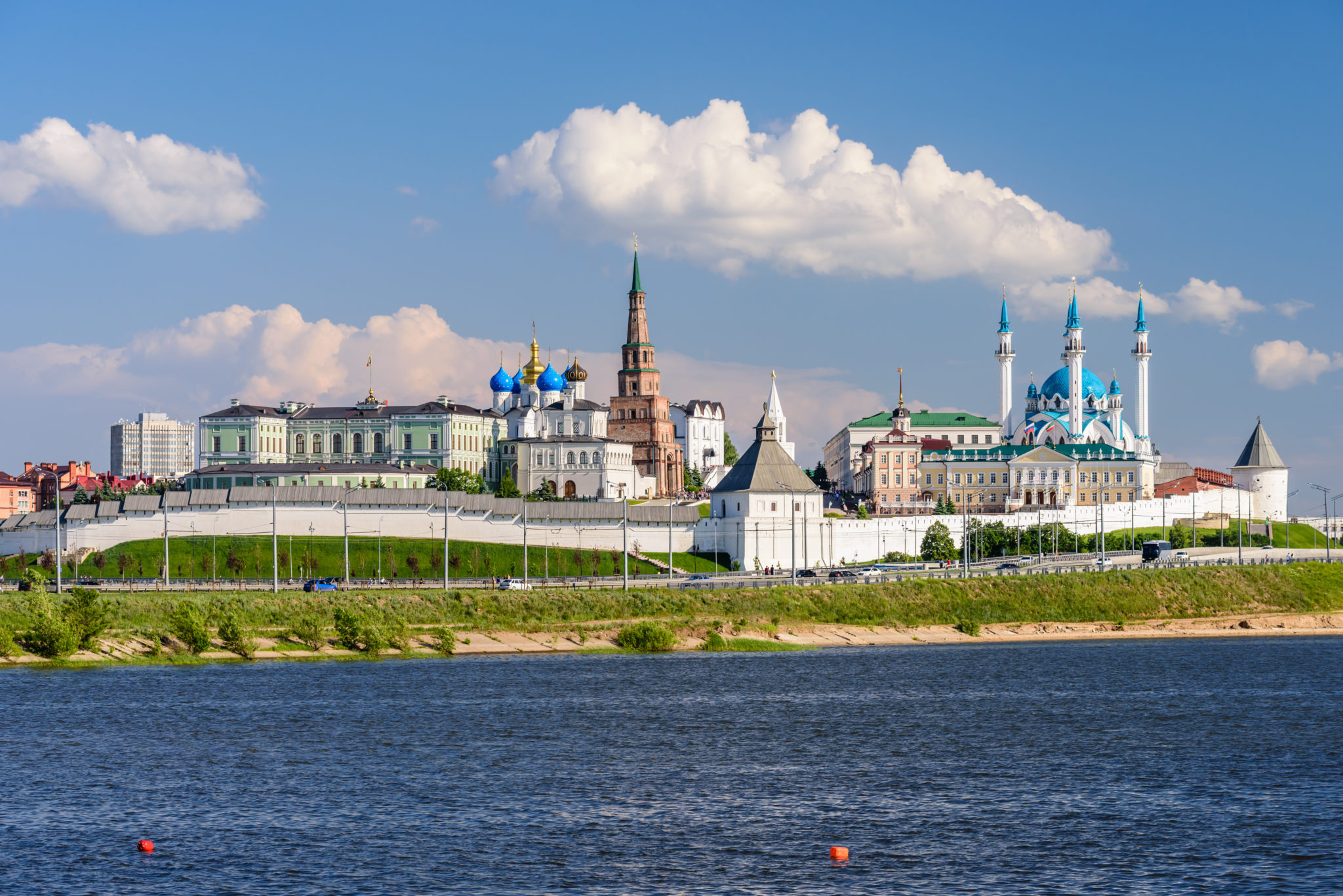
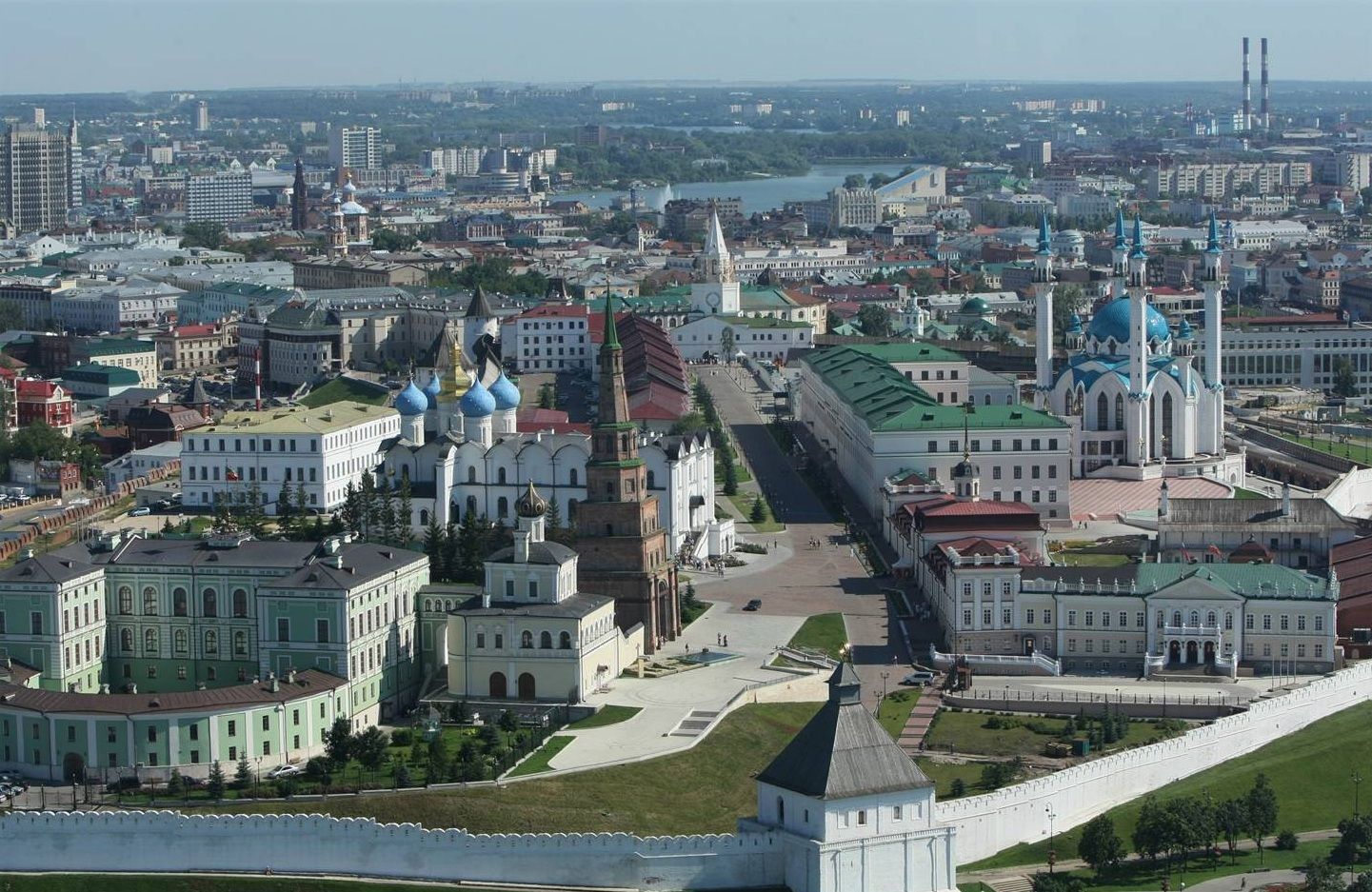
喀山(俄语:Каза́нь;鞑靼语:Казан,俄语拉丁化:Kazan'),俄罗斯鞑靼斯坦共和国的首都及最大城市。根据俄罗斯2018年人口调查,居民为1,243,500人[9],为俄国第六大城市。喀山位于俄罗斯欧洲部分,伏尔加河与卡赞卡河的交汇处。与莫斯科、圣彼得堡同为俄罗斯的三座A级历史文化城市[10]。2009年,俄罗斯专利局宣布喀山为俄罗斯运动之都[11]。喀山克里姆林宫为世界遗产。
Kasan (russisch Каза́нь; tatarisch Казан) ist die Hauptstadt der Republik Tatarstan in Russland. Mit 1,32 Millionen Einwohnern (Stand 2024)[2] und knapp 2 Millionen im Ballungsraum ist Kasan die fünftgrößte Stadt Russlands und die größte Stadt an der Wolga, sowie im Wolga-Föderationskreis. Sie liegt etwa 720 km Luftlinie östlich von Moskau an der Mündung der Kasanka in die Wolga.
Historisch gesehen war Kasan die Hauptstadt des Khanats von Kasan und wurde im 16. Jahrhundert von Iwan dem Schrecklichen erobert, woraufhin die Stadt Teil des russischen Zarenreichs wurde. Während des Pugatschow-Aufstands (1773–1775) erobert und weitgehend zerstört, wurde Kasan später während der Herrschaft von Katharina der Großen wiederaufgebaut. In den folgenden Jahrhunderten entwickelte sich Kasan zu einem wichtigen industriellen, kulturellen und religiösen Zentrum Russlands, insbesondere für den Islam. Nachdem Sowjetrussland 1920 Teil der Sowjetunion geworden war, wurde Kasan zur Hauptstadt der Tatarischen Autonomen Sozialistischen Sowjetrepublik (Tatarische ASSR). Nach der Auflösung der Sowjetunion blieb Kasan die Hauptstadt der Republik Tatarstan.
Kasan ist bekannt für seine lebendige Mischung aus tatarischer und russischer Kultur und ein beliebtes Touristenziel. So besuchten im Jahr 2023 4 Millionen Touristen die Stadt. Der Kasaner Kreml wurde im Jahr 2000 zum UNESCO-Weltkulturerbe erklärt und die 2005 errichtete Kul-Scharif-Moschee gilt als die zweitgrößte Moschee Europas. Im April 2009 verlieh das russische Patentamt Kasan das Recht, sich als „Dritte Hauptstadt Russlands“ zu bezeichnen, was die Bedeutung der Stadt hinter den internationalen Aushängeschildern Moskau und St. Petersburg verdeutlicht. Kasan war Gastgeber der Sommeruniversiade 2013 und einer der Austragungsorte der FIFA Fußball-Weltmeisterschaft 2018.
Kazan (/kəˈzæn, -ˈzɑːn/; Tatar: Qazan, قزان[14]; Russian: Каза́нь, IPA: [kɐˈzanʲ]; Tatar: Казан) is the capital and largest city of the Republic of Tatarstan, Russia. With a population of 1,243,500,[15] it is the sixth most populous city in Russia. Kazan is one of the largest religious, economic, political, scientific, educational, cultural and sports centers in Russia. Kazan lies at the confluence of the Volga and Kazanka Rivers in European Russia, about 715 kilometres (444 mi) east from Moscow. The Kazan Kremlin is a World Heritage Site.
The millennium of Kazan was celebrated in 2005.
In April 2009, the Russian Patent Office granted Kazan the right to brand itself as the "Third Capital" of Russia.[16] In 2009 it was chosen as the "sports capital of Russia"[17] and it still is referred to as such.[18] In 2011, the European Weightlifting Championships were held here. The city hosted the 2013 Summer Universiade, 2014 World Fencing Championships, the 2015 World Aquatics Championships, and is one of the host cities for the 2017 FIFA Confederations Cup and, for the first time in Russia, the official stage of the Red Bull Air Race World Championship under the auspices of the Fédération Aéronautique Internationale (FAI). Kazan has also held the World Wushu Championships. In 2018, Kazan became one of the cities where the 2018 FIFA World Cup was held.
In 2015, 2.1 million tourists visited Kazan, a 20% increase in comparison with 2014. In 2015 1.5 million tourists visited the Kazan Kremlin, and one million visited the city's hotel and entertainment complex with an aquapark called "Kazan Riviera".[19]
Kazan (en russe, Казань ; en tatar : Казан) est une ville de Russie et la capitale de la république du Tatarstan, une des subdivisions de la Russie. Sa population s'élevait à 1 231 878 habitants en 2017 ce qui en fait la sixième ville de Russie. Kazan est un grand centre industriel et universitaire ainsi qu'un important nœud de communication. Kazan est située sur le cours moyen de la Volga à environ 700 km à l'est de Moscou. Kazan comme la république dont elle fait partie est pour moitié peuplée de tatars ce qui lui vaut de bénéficier d'une autonomie politique plus importante que d'autres sujets de la Russie.
Kazàn' (in russo: Казань?; in tàtaro Казан /qɑˈzɑn/; in latino: Casanum o Cazanum) è la capitale della repubblica russa del Tatarstan e la sesta città della Russia per popolazione, con una popolazione di 1 243 500 abitanti.
È un importante centro di commercio, industria e cultura, ed è il più importante sito della cultura tatara. Si trova alla confluenza del Volga con la Kazanka, nella Russia europea centrale. La città è stata sede della XXVII Universiade dal 6 al 17 luglio 2013, e della XVI edizione dei Campionati mondiali di nuoto dal 24 luglio al 9 agosto 2015.
Fino al 28 giugno 2017 ha ospitato la Confederations Cup, mentre nel 2018 ha ospitato i Campionati Mondiali di calcio.
Kazán (en ruso: Казань, Kazan; en tártaro: Казан) es la capital y ciudad más poblada de la República de Tartaristán, en Rusia. La ciudad se encuentra a orillas del Volga, en la confluencia del río Kazanka. Es la octava ciudad más poblada de Rusia, con una población en su área metropolitana de 1,57 millones de habitantes.
Каза́нь (тат. Казан, Qazan, قزان) — город в Российской Федерации, столица Республики Татарстан, крупный порт на левом берегу реки Волги, при впадении в неё реки Казанки. Один из крупнейших религиозных, экономических, политических, научных, образовательных, культурных и спортивных центров России. Казанский кремль входит в число объектов Всемирного наследия ЮНЕСКО.
Исторически столица (центр) Казанского ханства, Казанского царства, Казанской губернии и Татарской АССР.
Город имеет зарегистрированный бренд «Третья столица России»[6].
В 2005 году было отпраздновано тысячелетие Казани.
Казань неоднократно принимала международные соревнования высокого уровня по различным видам спорта, в том числе XXVII Всемирную летнюю Универсиаду в 2013 году, а также ряд матчей чемпионата мира по футболу 2018 года.
В 2014 году в рейтинге сайта о путешествиях TripAdvisor в качестве самых быстро развивающихся туристических направлений столица Татарстана заняла 8-е место в мире и 3-е место в Европе[7][8].
В 2017—2018 годах в рейтинге Airbnb Казань заняла 3-е место в рейтинге самых популярных у туристов городов России[9].
Городской округ граничит с Зеленодольским, Высокогорским, Пестречинским, Лаишевским районами, по акватории Куйбышевского водохранилища — с Верхнеуслонским районом.
 FIFA Fussball-Weltmeisterschaft 2018
FIFA Fussball-Weltmeisterschaft 2018
 FIFA Fussball-Weltmeisterschaft 2018
FIFA Fussball-Weltmeisterschaft 2018
 Group C
Group C
 FIFA Fussball-Weltmeisterschaft 2018
FIFA Fussball-Weltmeisterschaft 2018
 Group B
Group B
 FIFA Fussball-Weltmeisterschaft 2018
FIFA Fussball-Weltmeisterschaft 2018
 Group F
Group F
 FIFA Fussball-Weltmeisterschaft 2018
FIFA Fussball-Weltmeisterschaft 2018
 Group H
Group H
 FIFA-Konföderationen-Pokal 2017
FIFA-Konföderationen-Pokal 2017
 Russia
Russia

 Columbia
Columbia
 FIFA Fussball-Weltmeisterschaft 2014
FIFA Fussball-Weltmeisterschaft 2014
 FIFA Fussball-Weltmeisterschaft 2018
FIFA Fussball-Weltmeisterschaft 2018
 Group H
Group H

 Sport
Sport
 (F)Copa América
(F)Copa América

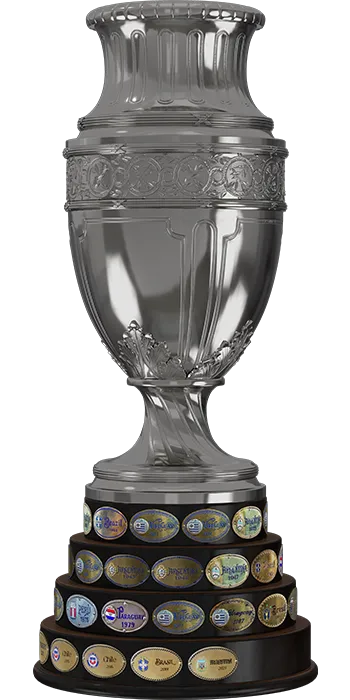
 FIFA Fussball-Weltmeisterschaft 2018
FIFA Fussball-Weltmeisterschaft 2018
 FIFA Fussball-Weltmeisterschaft 2018
FIFA Fussball-Weltmeisterschaft 2018
 Group E
Group E
 FIFA Fussball-Weltmeisterschaft 2018
FIFA Fussball-Weltmeisterschaft 2018
 Group C
Group C
 FIFA Fussball-Weltmeisterschaft 2018
FIFA Fussball-Weltmeisterschaft 2018
 Group A
Group A
 FIFA Fussball-Weltmeisterschaft 2018
FIFA Fussball-Weltmeisterschaft 2018
 Group H
Group H
 Russia
Russia

 Sport
Sport

 FIFA Fussball-Weltmeisterschaft 2018
FIFA Fussball-Weltmeisterschaft 2018
 FIFA Fussball-Weltmeisterschaft 2018
FIFA Fussball-Weltmeisterschaft 2018
 Group A
Group A
 FIFA Fussball-Weltmeisterschaft 2018
FIFA Fussball-Weltmeisterschaft 2018
 Group B
Group B
 FIFA Fussball-Weltmeisterschaft 2018
FIFA Fussball-Weltmeisterschaft 2018
 Group E
Group E
 FIFA Fussball-Weltmeisterschaft 2018
FIFA Fussball-Weltmeisterschaft 2018
 Group D
Group D
 FIFA-Konföderationen-Pokal 2017
FIFA-Konföderationen-Pokal 2017
 UEFA European Championship 2020
UEFA European Championship 2020
 Russia
Russia

 Sport
Sport
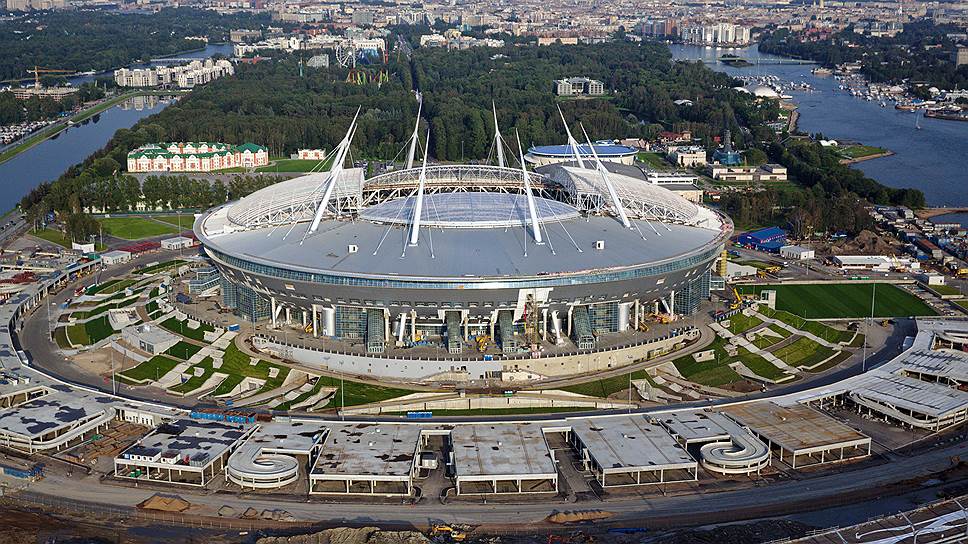
 FIFA Fussball-Weltmeisterschaft 2014
FIFA Fussball-Weltmeisterschaft 2014
 FIFA Fussball-Weltmeisterschaft 2018
FIFA Fussball-Weltmeisterschaft 2018
 Group D
Group D
 FIFA Fussball-Weltmeisterschaft 2022
FIFA Fussball-Weltmeisterschaft 2022
 FIFA Fussball-Weltmeisterschaft 2022
FIFA Fussball-Weltmeisterschaft 2022
 Group F
Group F
 UEFA European Championship 2016
UEFA European Championship 2016
 UEFA European Championship 2020
UEFA European Championship 2020
 Group E
Group E

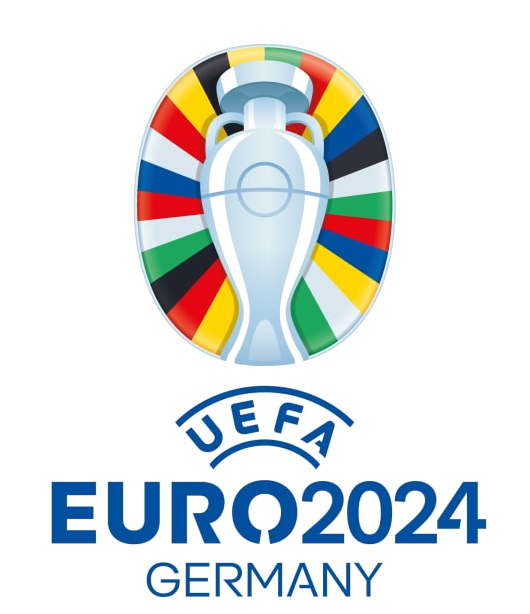 UEFA European Championship 2024
UEFA European Championship 2024
 Croatia
Croatia

 Sport
Sport
 (F)UEFA Nations League
(F)UEFA Nations League
 UEFA Nations League
UEFA Nations League
 UEFA Nations League A - Group 4
UEFA Nations League A - Group 4
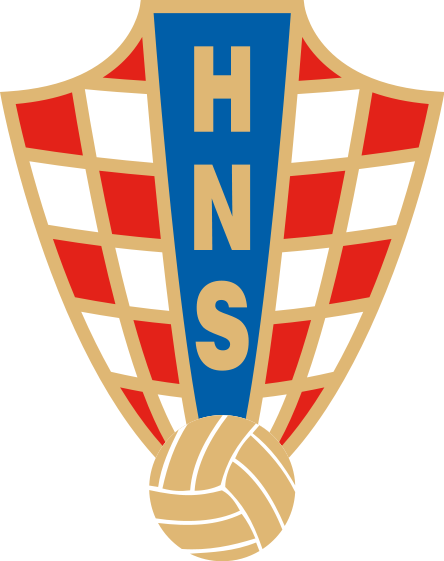
 FIFA Fussball-Weltmeisterschaft 2018
FIFA Fussball-Weltmeisterschaft 2018
 Group B
Group B
 FIFA Fussball-Weltmeisterschaft 2022
FIFA Fussball-Weltmeisterschaft 2022
 FIFA Fussball-Weltmeisterschaft 2022
FIFA Fussball-Weltmeisterschaft 2022
 Group F
Group F
 Morocco
Morocco

 Sport
Sport
 (F)African Cup of Nations
(F)African Cup of Nations

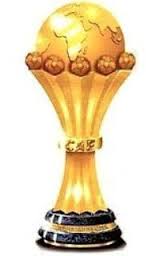
 César Luis Menotti
César Luis Menotti
 FIFA Fussball-Weltmeisterschaft 2014
FIFA Fussball-Weltmeisterschaft 2014
 FIFA Fussball-Weltmeisterschaft 2018
FIFA Fussball-Weltmeisterschaft 2018
 Group F
Group F
 FIFA Fussball-Weltmeisterschaft 2022
FIFA Fussball-Weltmeisterschaft 2022
 FIFA Fussball-Weltmeisterschaft 2022
FIFA Fussball-Weltmeisterschaft 2022
 Group C
Group C

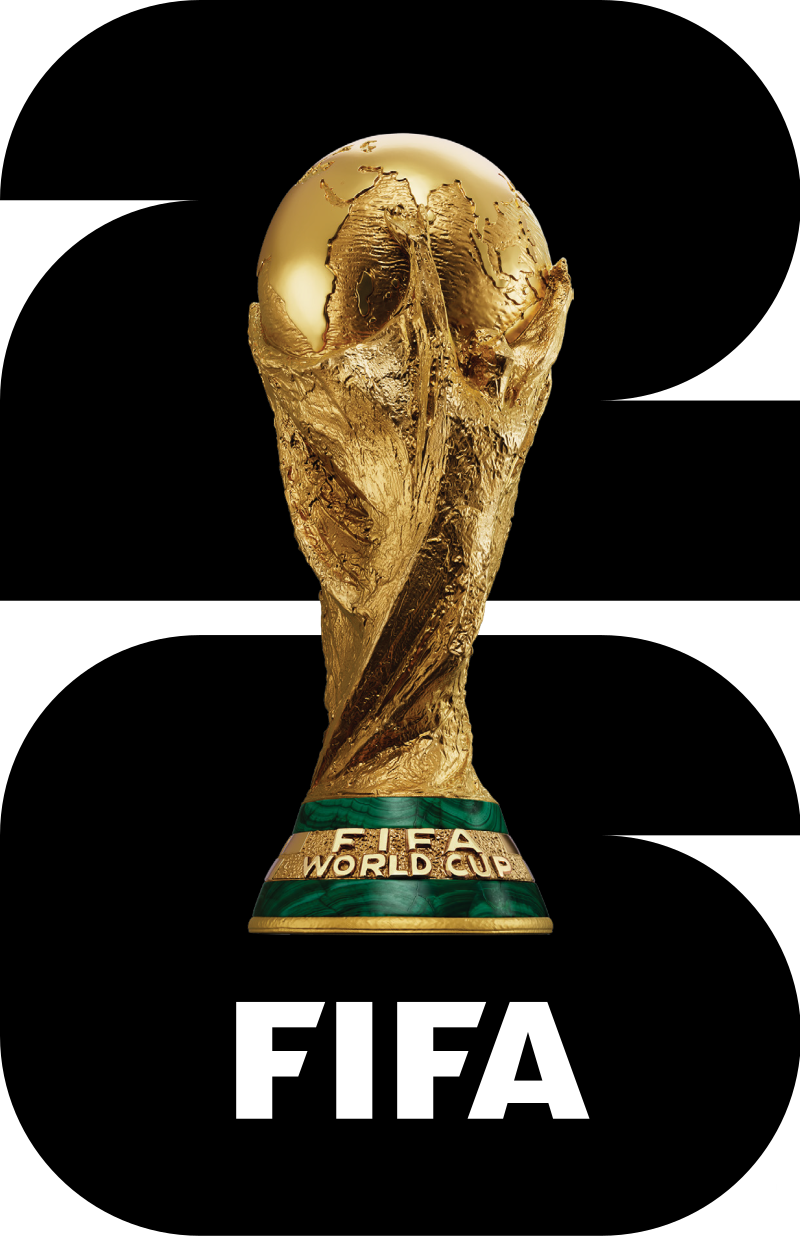 FIFA Fussball-Weltmeisterschaft 2026
FIFA Fussball-Weltmeisterschaft 2026
 FIFA-Konföderationen-Pokal 2013
FIFA-Konföderationen-Pokal 2013
 FIFA-Konföderationen-Pokal 2017
FIFA-Konföderationen-Pokal 2017
 Mexico
Mexico

 Sport
Sport
 (F)FIFA Confederations Cup
(F)FIFA Confederations Cup

 Sport
Sport
 (F)CONCACAF Gold Cup
(F)CONCACAF Gold Cup

 Sport
Sport
 (F)Soccer at the Olympic Games
(F)Soccer at the Olympic Games
 Sven-Göran Eriksson
Sven-Göran Eriksson
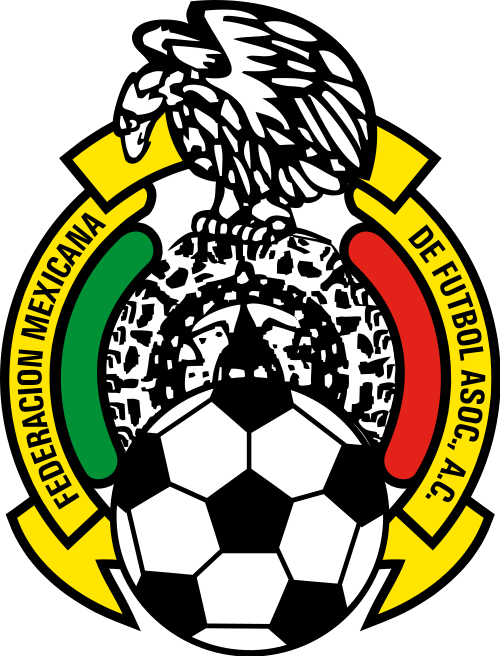

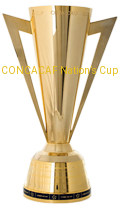


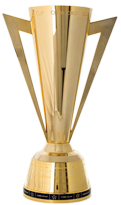







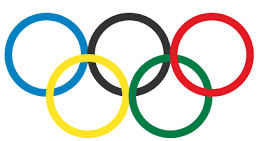
 FIFA Fussball-Weltmeisterschaft 2018
FIFA Fussball-Weltmeisterschaft 2018
 FIFA Fussball-Weltmeisterschaft 2018
FIFA Fussball-Weltmeisterschaft 2018
 Group C
Group C
 FIFA Fussball-Weltmeisterschaft 2018
FIFA Fussball-Weltmeisterschaft 2018
 Group H
Group H
 FIFA Fussball-Weltmeisterschaft 2018
FIFA Fussball-Weltmeisterschaft 2018
 Group G
Group G
 FIFA Fussball-Weltmeisterschaft 2018
FIFA Fussball-Weltmeisterschaft 2018
 Group B
Group B
 Russia
Russia

 Sport
Sport


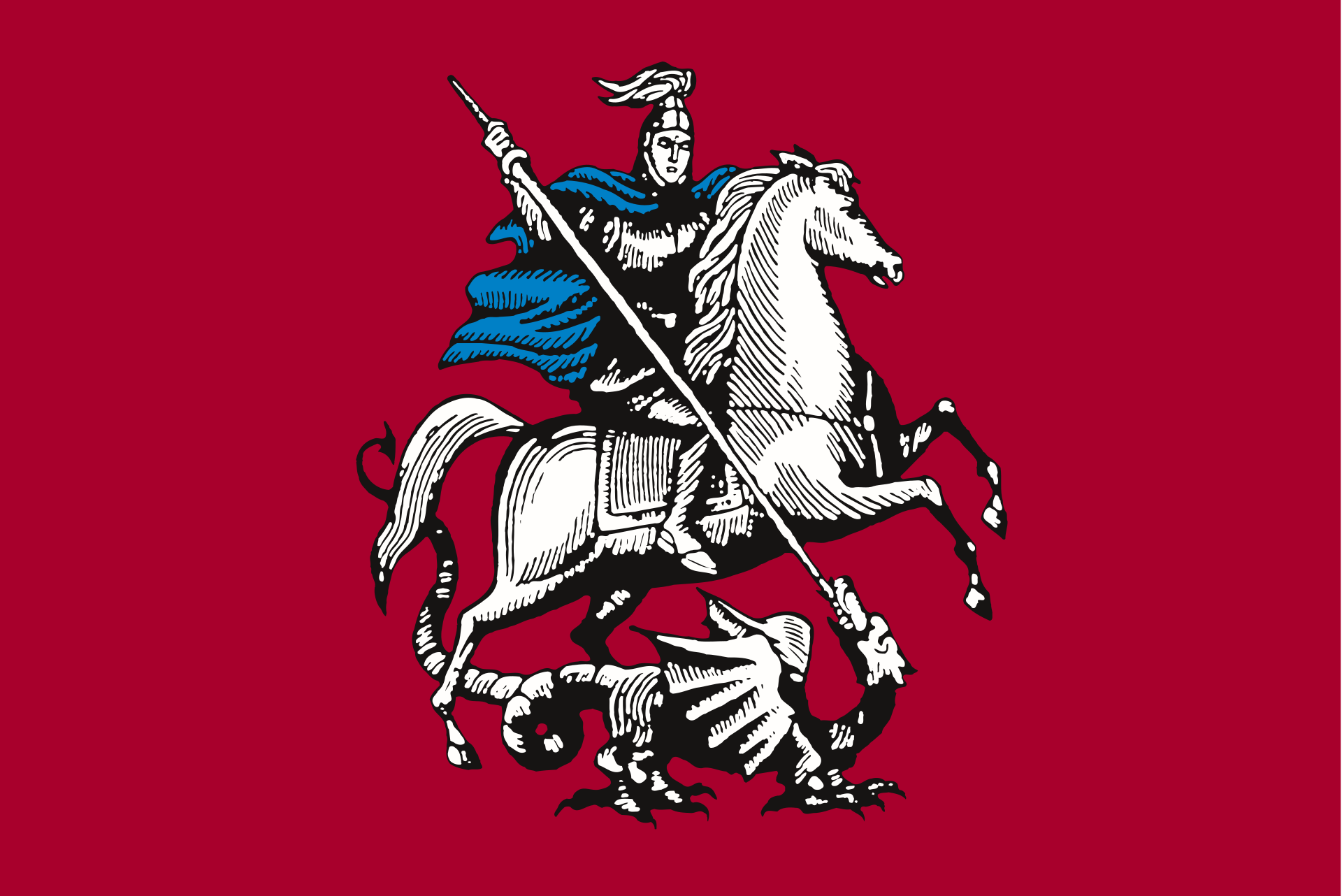 *Moscow
*Moscow
 Eurovision Song Contest,ESC
Eurovision Song Contest,ESC
 FIFA Fussball-Weltmeisterschaft 2018
FIFA Fussball-Weltmeisterschaft 2018
 FIFA Fussball-Weltmeisterschaft 2018
FIFA Fussball-Weltmeisterschaft 2018
 Group A
Group A
 FIFA Fussball-Weltmeisterschaft 2018
FIFA Fussball-Weltmeisterschaft 2018
 Group F
Group F
 FIFA Fussball-Weltmeisterschaft 2018
FIFA Fussball-Weltmeisterschaft 2018
 Group B
Group B
 FIFA Fussball-Weltmeisterschaft 2018
FIFA Fussball-Weltmeisterschaft 2018
 Group C
Group C
 FIFA Fussball-Weltmeisterschaft 2018
FIFA Fussball-Weltmeisterschaft 2018
 Group D
Group D
 FIFA Fussball-Weltmeisterschaft 2018
FIFA Fussball-Weltmeisterschaft 2018
 Group H
Group H
 FIFA Fussball-Weltmeisterschaft 2018
FIFA Fussball-Weltmeisterschaft 2018
 Group G
Group G
 FIFA Fussball-Weltmeisterschaft 2018
FIFA Fussball-Weltmeisterschaft 2018
 Group E
Group E

 History
History
 Olympic Summer Games
Olympic Summer Games
 Russia
Russia
 Silk road
Silk road
 Shanghai Cooperation Organization
Shanghai Cooperation Organization

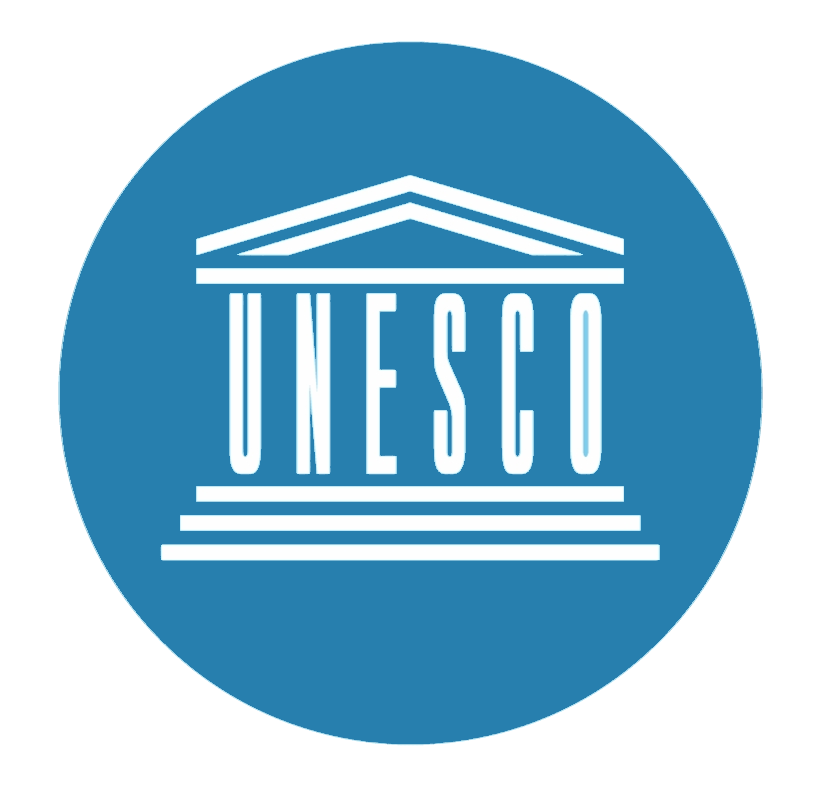 World Heritage
World Heritage

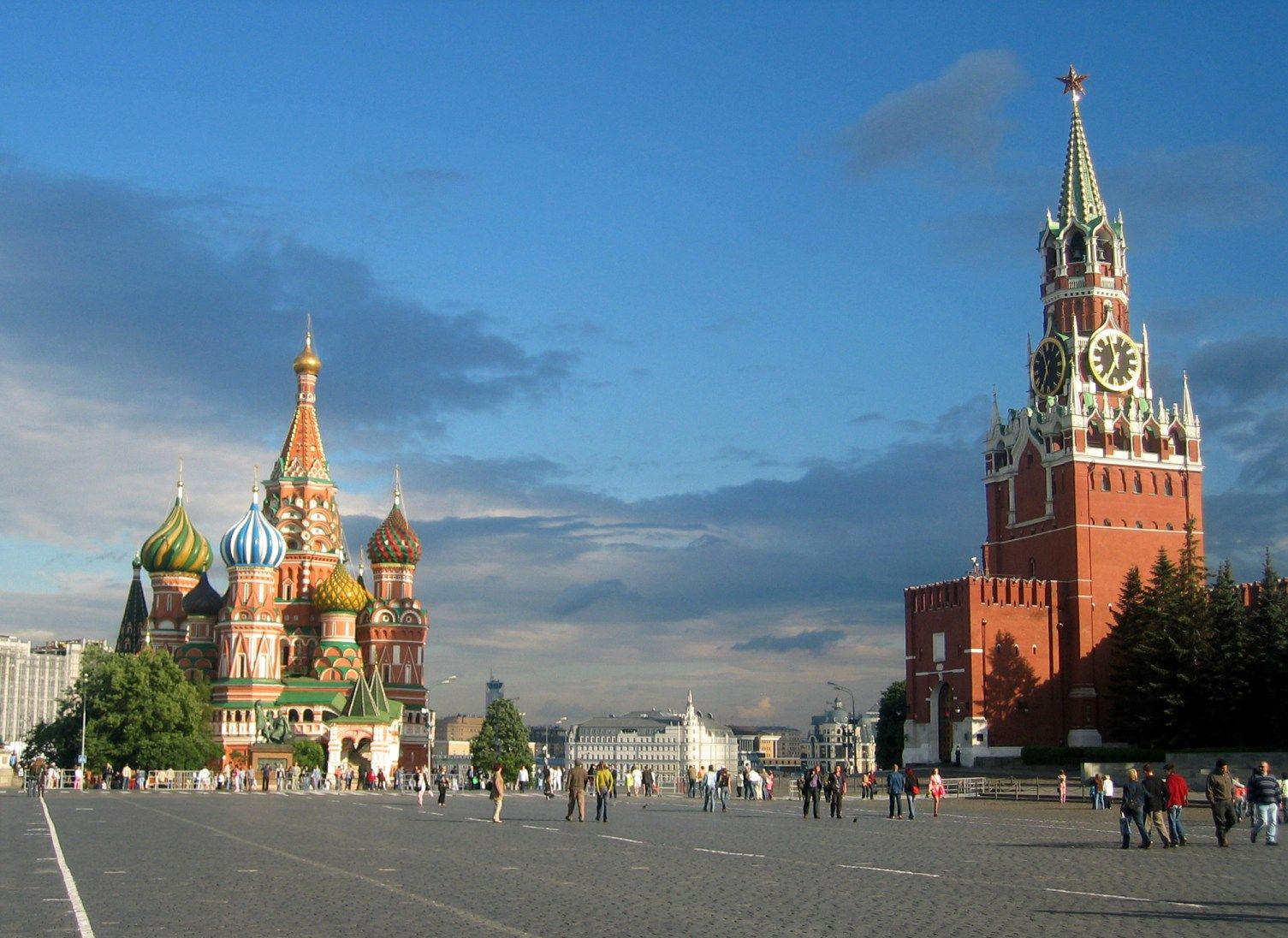
莫斯科(俄语:Москва,罗马化:Moskva,IPA:[mɐsˈkva] ![]() 聆听)是俄罗斯首都与最大都市、以及莫斯科州首府,为俄罗斯全国政治、经济、科学、文化及交通的中心。面积2,510平方公里,与莫斯科州和卡卢加州接壤。城区人口约1200万,是欧洲人口第二多的城市,仅次于伊斯坦布尔,占俄罗斯总人口的1/10。
聆听)是俄罗斯首都与最大都市、以及莫斯科州首府,为俄罗斯全国政治、经济、科学、文化及交通的中心。面积2,510平方公里,与莫斯科州和卡卢加州接壤。城区人口约1200万,是欧洲人口第二多的城市,仅次于伊斯坦布尔,占俄罗斯总人口的1/10。
莫斯科沿莫斯科河而建,由1147年的莫斯科大公时代开始,在沙皇俄国、苏联及今日的俄罗斯联邦时代,都一直担任著国家首都的角色。它是历史悠久的克里姆林宫所在地,并做为上述政权的总部,是俄罗斯数个被列入世界遗产的建筑群之一。
Moskau (russisch Москва́  [mɐskˈva], Moskwa) ist die Hauptstadt der Russischen Föderation und mit rund 12,4 Millionen Einwohnern (Stand 2017)[1] die zweitgrößte Stadt bzw. mit 15,1 Millionen (2012)[2] die größte Agglomeration Europas.
[mɐskˈva], Moskwa) ist die Hauptstadt der Russischen Föderation und mit rund 12,4 Millionen Einwohnern (Stand 2017)[1] die zweitgrößte Stadt bzw. mit 15,1 Millionen (2012)[2] die größte Agglomeration Europas.
Moskau ist das politische, wirtschaftliche, wissenschaftliche und kulturelle Zentrum Russlands, mit Universitäten und Instituten sowie zahlreichen Kirchen, Theatern, Museen und Galerien. Im Stadtgebiet befinden sich einige der höchsten europäischen Hochhäuser und die markanten Sieben Schwestern, sowie der 540 Meter hohe Ostankino-Turm, das höchste Bauwerk Europas. Moskau ist Sitz der Russisch-Orthodoxen Kirche, der Patriarch residiert im Danilow-Kloster, das größte russisch-orthodoxe Kirchengebäude ist die Moskauer Christ-Erlöser-Kathedrale. Es gibt im Stadtgebiet von Moskau über 300 Kirchen.[3]
Der Kreml und der Rote Platz im Zentrum Moskaus stehen seit 1990 auf der UNESCO-Liste des Weltkulturerbes. Mit acht Fernbahnhöfen, drei internationalen Flughäfen und drei Binnenhäfen ist die Stadt wichtigster Verkehrsknoten und größte Industriestadt Russlands.
モスクワ(ロシア語:Москва́ IPA: [mɐˈskva] マスクヴァー、 発音[ヘルプ/ファイル])は、ロシア連邦の首都。連邦市として市単独でロシア連邦を構成する83の連邦構成主体のひとつとなっており、周囲を占めるモスクワ州の州都でもある。ただし州とは区別され「モスクワ市」(Город Москва)となる。人口は約1250万人でヨーロッパで最も人口の多い都市であり、世界有数の世界都市である。漢字による当て字は莫斯科。英語で発音した場合には、モスコーあるいはモスカウ(Moscow [ˈmɒskoʊ, ˈmɒskaʊ])のようになる。
発音[ヘルプ/ファイル])は、ロシア連邦の首都。連邦市として市単独でロシア連邦を構成する83の連邦構成主体のひとつとなっており、周囲を占めるモスクワ州の州都でもある。ただし州とは区別され「モスクワ市」(Город Москва)となる。人口は約1250万人でヨーロッパで最も人口の多い都市であり、世界有数の世界都市である。漢字による当て字は莫斯科。英語で発音した場合には、モスコーあるいはモスカウ(Moscow [ˈmɒskoʊ, ˈmɒskaʊ])のようになる。
Moscow (/ˈmɒskoʊ, -kaʊ/; Russian: Москва́, tr. Moskvá, IPA: [mɐˈskva] ( listen)) is the capital and most populous city of Russia, with 13.2 million residents within the city limits[11] and 17.1 million within the urban area.[12] Moscow is one of Russia's three federal cities.
listen)) is the capital and most populous city of Russia, with 13.2 million residents within the city limits[11] and 17.1 million within the urban area.[12] Moscow is one of Russia's three federal cities.
Moscow is a major political, economic, cultural, and scientific centre of Russia and Eastern Europe, as well as the largest city (both by population and by area) entirely on the European continent. By broader definitions Moscow is among the world's largest cities, being the 14th largest metro area, the 18th largest agglomeration, the 14th largest urban area, and the 11th largest by population within city limits worldwide. According to Forbes 2013,[13] Moscow has been ranked as the ninth most expensive city in the world by Mercer and has one of the world's largest urban economies, being ranked as an alpha global city according to the Globalization and World Cities Research Network, and is also one of the fastest growing tourist destinations in the world according to the MasterCard Global Destination Cities Index.
Moscow is the northernmost and coldest megacity and metropolis on Earth. It is home to the Ostankino Tower, the tallest free standing structure in Europe; the Federation Tower, the tallest skyscraper in Europe; and the Moscow International Business Center. By its territorial expansion on July 1 2012 southwest into the Moscow Oblast, the area of the capital more than doubled, going from 1,091 to 2,511 square kilometers (421 to 970 sq mi), resulting in Moscow becoming the largest city on the European continent by area; it also gained an additional population of 233,000 people[14][15]
Moscow is situated on the Moskva River in the Central Federal District of European Russia, making it Europe's most populated inland city. The city is well known for its architecture, particularly its historic buildings such as Saint Basil's Cathedral with its colourful architectural style. With over 40 percent of its territory covered by greenery, it is one of the greenest capitals and major cities in Europe and the world, having the largest forest in an urban area within its borders—more than any other major city—even before its expansion in 2012. The city has served as the capital of a progression of states, from the medieval Grand Duchy of Moscow and the subsequent Tsardom of Russia to the Russian Empire to the Soviet Union and the contemporary Russian Federation.
Moscow is the seat of power of the Government of Russia, being the site of the Moscow Kremlin, a medieval city-fortress that is today the residence for work of the President of Russia. The Moscow Kremlin and Red Square are also one of several World Heritage Sites in the city. Both chambers of the Russian parliament (the State Duma and the Federation Council) also sit in the city. Moscow is considered the centre of Russian culture, having served as the home of Russian artists, scientists and sports figures and because of the presence of museums, academic and political institutions and theatres.
The city is served by a transit network, which includes four international airports,[16] nine railway terminals, numerous trams, a monorail system and one of the deepest underground rapid transit systems in the world, the Moscow Metro, the fourth-largest in the world and largest outside Asia in terms of passenger numbers, and the busiest in Europe. It is recognised as one of the city's landmarks due to the rich architecture of its 200 stations.[citation needed]
Moscow has acquired a number of epithets, most referring to its size and preeminent status within the nation: The Third Rome (Третий Рим), The Whitestone One (Белокаменная), The First Throne (Первопрестольная), The Forty Forties (Сорок Сороков) (The Forty Soroks, "sorok" translates as forty, but here it is old name of district or parish, and "forty" in old Russian means not 40, but "great many"). Moscow is one of the twelve Hero Cities. In old Russian the word "Сорок" (forty) also meant a church administrative district, which consisted of about forty churches. The demonym for a Moscow resident is "москвич" (moskvich) for male or "москвичка" (moskvichka) for female, rendered in English as Muscovite.
Moscou (en russe : Москва, Moskva, API : /mɐˈskva/) est la capitale de la Russie et compte douze millions d'habitants intra muros (2017) sur une superficie de 2 510 km2 ce qui en fait la ville la plus peuplée à la fois du pays et d'Europe. Sur le plan administratif Moscou fait partie du district fédéral central et a le statut de ville d'importance fédérale qui lui donne le même niveau d'autonomie que les autres sujets de la Russie. Elle est enclavée dans l'oblast de Moscou, mais en est administrativement indépendante. Ses habitants sont les Moscovites. Moscou se situe dans la partie européenne de la Russie au milieu d'une région de plaine. Sa latitude élevée lui vaut un climat froid et continental. Le Kremlin, son cœur historique, est édifié sur une colline qui domine la rive gauche de la rivière Moskova.
Moscou a joué un rôle central dans l'histoire de la Russie. Petit point d'appui militaire créé vers 1150 dans le nord de la Rus' de Kiev, elle prend progressivement le relais de Kiev, après la décomposition politique de cet État et les invasions mongoles du XIIIe siècle. Elle devient la capitale du Grand-duché de Moscou puis de l'Empire russe qui étend progressivement son territoire jusqu'à la frontière avec la Pologne à l'ouest, la Crimée au sud et l'océan Pacifique à l'est. Elle perd son rôle de capitale au profit de Saint-Pétersbourg lorsque Pierre le Grand au début du XVIIIe siècle décide de moderniser son pays à marche forcée. Néanmoins, au cours des XVIIIe et XIXe siècles, Moscou devient un centre industriel majeur et le cœur du réseau de communications ferré et routier d'un pays qui compte désormais parmi les grandes puissances européennes. La Révolution d'Octobre en 1917 redonne le rôle de capitale à Moscou et met en place un régime communiste qui accélère en deux décennies l'industrialisation de la ville et quadruple la population qui passe de un à quatre millions habitants. Ayant échappé de peu à l'occupation allemande durant la Seconde Guerre mondiale, la ville renoue avec une croissance économique et démographique effrénée à l'issue de celle-ci. Elle devient la capitale d'une des deux superpuissances mondiales. L'effondrement du régime communiste en 1991 entraine une profonde transformation de la ville qui abandonne presque complètement son rôle de centre industriel au profit d'une position de pôle tertiaire complètement converti à l'économie de marché. La construction du Centre de commerce international de Moscou est le symbole de cette transformation.
Moscou concentre une part particulièrement importante de la richesse économique du pays : elle produit 25 % du PIB de la Russie. La ville est le siège de nombreuses institutions universitaires et culturelles du pays. Mais cette mutation ne s'est pas faite sans poser de problèmes. Les écarts socio-économiques étant devenus considérables : une part de la population s'est fortement enrichie, tandis que l'augmentation du coût de la vie a aggravé les conditions de vie des plus modestes. Moscou a du mal à adapter ses structures routières à l'explosion du parc des véhicules des particuliers et à une croissance démographique qui se poursuit dans un contexte national pourtant déprimé sur ce plan.
Moscou dispose d'un important patrimoine artistique et architectural dont trois ensembles inscrits au Patrimoine mondial de l'Unesco. Ce sont notamment le Kremlin avec ses palais et églises, la cathédrale Saint-Basile-le-Bienheureux sur la place Rouge, la Galerie Tretiakov, le couvent de Novodievitchi, l'église de Kolomenskoïe ainsi que les sept gratte-ciel staliniens.
Moscú (en ruso, Москва,  /mɐˈskva/ (?·i) transliterado como Moskvá) es la capital y la entidad federal más poblada de Rusia. La ciudad es un importante centro político, económico, cultural y científico de Rusia y del continente. Moscú es la megaciudad más septentrional de la Tierra, la segunda ciudad de Europa en población después de Estambul,345 y la sexta del mundo. Su población es de 12 108 2576 habitantes. En virtud de su expansión territorial al suroeste del óblast de Moscú, el 1 de julio de 2012 la capital aumentó su área en 2,5 veces, desde unos 1000 km² hasta 2500 km², y ganó una población adicional de 230 000 habitantes.7
/mɐˈskva/ (?·i) transliterado como Moskvá) es la capital y la entidad federal más poblada de Rusia. La ciudad es un importante centro político, económico, cultural y científico de Rusia y del continente. Moscú es la megaciudad más septentrional de la Tierra, la segunda ciudad de Europa en población después de Estambul,345 y la sexta del mundo. Su población es de 12 108 2576 habitantes. En virtud de su expansión territorial al suroeste del óblast de Moscú, el 1 de julio de 2012 la capital aumentó su área en 2,5 veces, desde unos 1000 km² hasta 2500 km², y ganó una población adicional de 230 000 habitantes.7
Moscú está situada a orillas del río Moscova, en el Distrito Federal Central de la Rusia europea. En el curso de su historia, la ciudad ha sido capital de una sucesión de estados, desde el Gran Ducado de Moscú de la Edad Media, el Zarato ruso y la Unión Soviética, exceptuando el período del Imperio ruso. En Moscú se encuentra el Kremlin de Moscú, una antigua fortaleza donde se halla hoy el lugar de trabajo del presidente de Rusia. El Kremlin también es uno de los varios sitios que son Patrimonio de la Humanidad en la ciudad.8 Ambas cámaras del Parlamento ruso (la Duma Estatal y el Consejo de la Federación) también tienen su sede en Moscú.
La ciudad posee una amplia red de transporte que incluye tres aeropuertos internacionales, nueve estaciones de ferrocarril y uno de los más profundos sistemas de metro del mundo, el metro de Moscú, solo superado por el de Tokio en número de pasajeros. Su suburbano es reconocido como uno de los más ricos y variados arquitectónicamente en sus 215 estaciones, repartidas por la ciudad. Según la publicación Forbes 2011, Moscú es la segunda ciudad del mundo en número de multimillonarios.
Москва́ (произношение (инф.)) — столица России, город федерального значения, административный центр Центрального федерального округа и центр Московской области, в состав которой не входит. Крупнейший по численности населения город России и её субъект — 12 630 289[2] чел. (2019), самый населённый из городов, полностью расположенных в Европе, входит в десятку городов мира по численности населения[5], крупнейший русскоязычный город в мире. Центр Московской городской агломерации.
Историческая столица Великого княжества Московского, Русского царства, Российской империи (в 1728—1730 годах), Советской России и СССР. Город-герой. В Москве находятся федеральные органы государственной власти Российской Федерации (за исключением Конституционного суда), посольства иностранных государств, штаб-квартиры большинства крупнейших российских коммерческих организаций и общественных объединений.
Расположена на реке Москве в центре Восточно-Европейской равнины, в междуречье Оки и Волги. Как субъект федерации Москва граничит с Московской и Калужской областями.
Москва — популярный туристический центр России. Кремль, Красная площадь, Новодевичий монастырь и Церковь Вознесения в Коломенском входят в список объектов всемирного наследия ЮНЕСКО[6]. Она является важнейшим транспортным узлом: город обслуживают 6 аэропортов, 9 железнодорожных вокзалов, 3 речных порта (имеется речное сообщение с морями бассейнов Атлантического и Северного Ледовитого океанов). С 1935 года в Москве работает метрополитен. Москва — спортивный центр страны. В 1980 году в Москве прошли XXII летние Олимпийские игры, а в 2018 город стал одним из хозяев чемпионата мира по футболу.
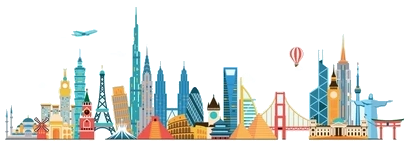 International cities
International cities
 Architecture
Architecture